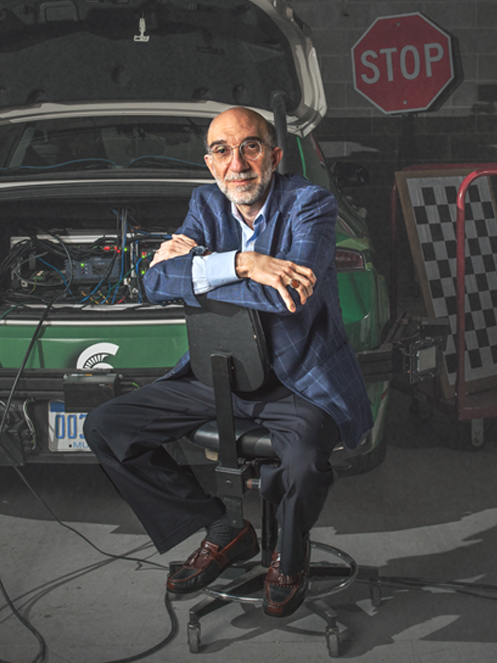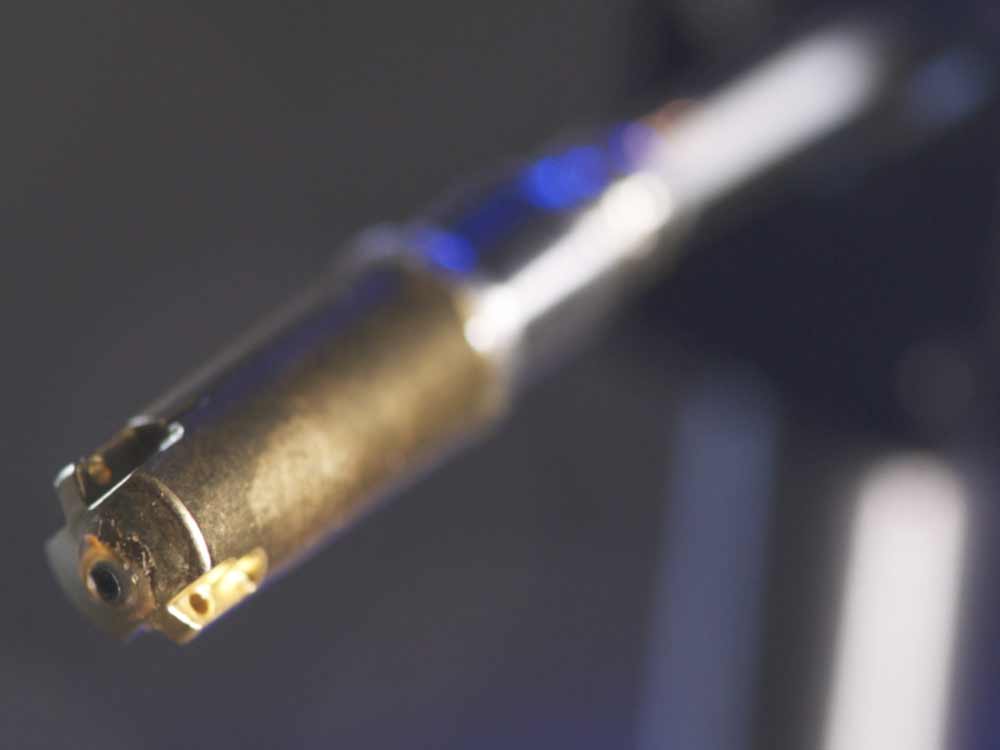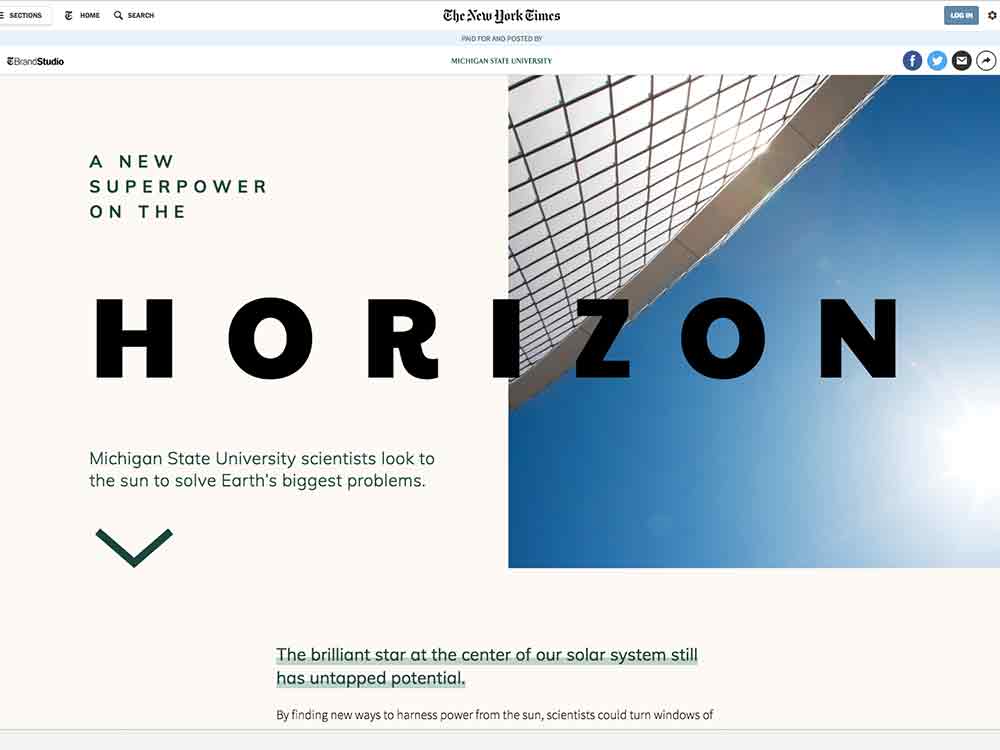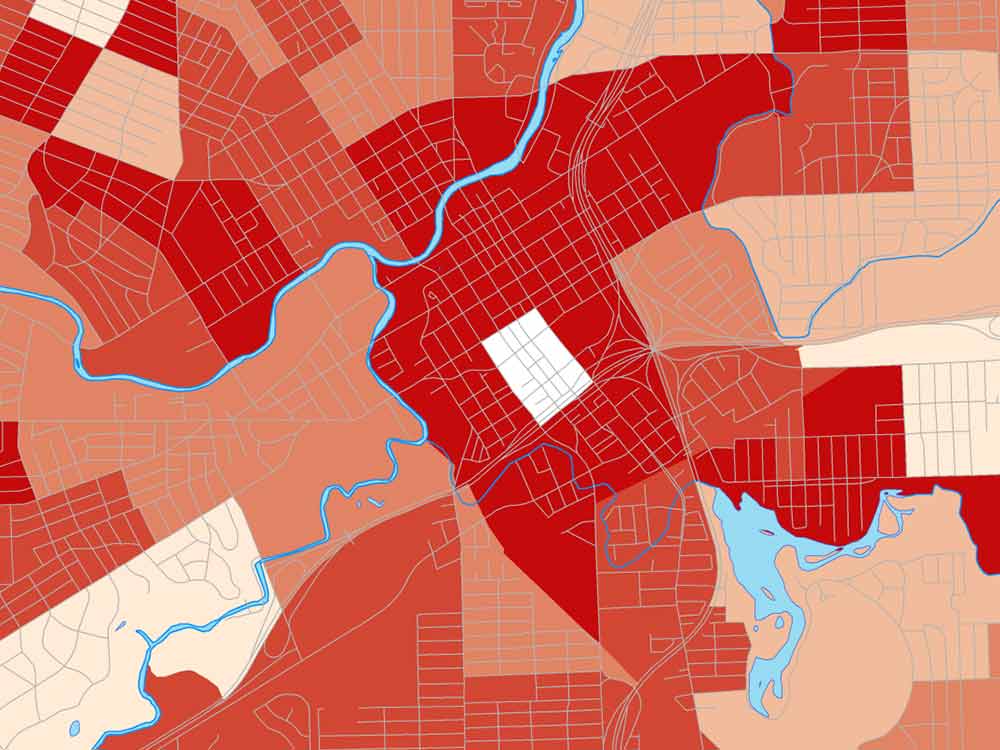Safer autonomous vehicles
Live lidar measurements, advanced localization algorithms and high-resolution 3D maps determine the precise location of Michigan State’s autonomous vehicle.
An autonomous vehicle created at MSU determines its precise location within its environment using live lidar measurements, advanced localization algorithms and high-resolution 3D maps, says Hayder Radha, director of the university’s Connected and Autonomous Networked Vehicles for Active Safety research center.
If every road was straight and the weather always sunny and warm, self-driving—or autonomous—vehicles would have little trouble getting from point A to point B.
If only.
In reality, making autonomous vehicles part of our future will require technology that not only keeps self-driving vehicles on the road in perfect conditions, but also guides them safely through snow, fog and other challenging weather and traffic conditions.
That’s where Michigan State University comes in.
Working in a College of Engineering-based research center called Connected and Autonomous Networked Vehicles for Active Safety, or CANVAS, MSU researchers are perfecting the sensing and perception algorithms that will tell an MSU-created autonomous car where to go, no matter the weather or traffic conditions.
“We are studying the challenges associated with driving autonomously in severe weather conditions,” says Hayder Radha, CANVAS director and professor of electrical and computer engineering. “That includes heavy snow, fog and even extreme low temperatures, which can affect navigation.”
Radha says MSU is working to perfect radar sensing, “which could be one of the most dependable sensors that an autonomous vehicle could rely on.”
In addition to helping the car make its way through snow, rain or gloom of night, the radar detects objects and can distinguish what they are, a process known as “classification.”
“It will be able to tell if that object is a pedestrian or a bike or another vehicle,” Radha says. “Is it something that is going to move? Then it can help the car make the decision on how to respond.”
Radha says radar could become almost as good as a camera in helping to achieve what he calls “situational awareness.”
“Radar,
when fused with other sensing modalities, could achieve not only a human
level
of perception, but a super-human level of perception.”
–
Hayder
Radha
“Radar, when fused with other sensing modalities, could achieve not only a human level of perception, but a super-human level of perception,” Radha says.
MSU also is partnering with a New York-based startup called CARMERA to develop three-dimensional maps that can assist greatly in the navigation process. And while it’s too early to proclaim mission accomplished, great strides are being made.
Last fall, the CANVAS team experimented with maps developed on the MSU campus. Later in the year, when leaves had fallen from the trees and the landscape looked significantly different, the maps and the MSU autonomous driving algorithms were tested, passing with flying colors.
Another focus of MSU’s research is what’s called “connected sensor fusion,” which essentially entails vehicles communicating with one another and sharing sensor data. For example, an autonomous car is approaching an intersection where a pedestrian is waiting to cross. That car, autonomous car A, can’t detect the person because another car, autonomous car B, is in its way. But car B can detect the pedestrian.
“The vehicle that perceives the pedestrian is able to share that information with other nearby vehicles,” Radha says.

An autonomous vehicle created at Michigan State determines its precise location within its environment using live lidar measurements, advanced localization algorithms and high-resolution 3D maps, says Hayder Radha, director of the university’s Connected and Autonomous Networked Vehicles for Active Safety research center.
Despite some drivers’ concerns about letting go of the wheel, the use of autonomous vehicles is expected to make the road a safer place. Improving sensing and perception technologies is intended to reduce human error, which, according to recent studies, causes 90 percent of car accidents.
Self-driving cars also may benefit car owners by increasing productivity. Radha points out that if someone is stuck in traffic but riding in a self-driving car, he or she can do some work, relax a bit, even take a nap.
“It could significantly improve our quality of life,” he says.
Read more stories about MSU Research Solutions

Brave new medical discoveries
Exploring intersections of scientific disciplines helps fight complex diseases.

A new superpower on the horizon
Michigan State University scientists look to the sun to solve Earth’s biggest problems.



